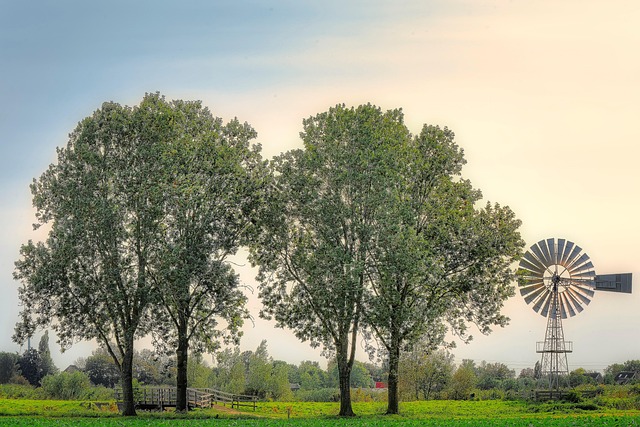New Bedford, MA, boasts a diverse array of ornamental fencing styles that reflect its rich history and evolving aesthetic. This article explores the historical roots of fencing in the city, highlighting popular designs that have shaped local landscapes. From Victorian influences to traditional ironwork and modern interpretations, each style tells a story. Furthermore, we delve into community engagement and the surge of artistic expressions adorning fences, contributing to New Bedford’s vibrant urban fabric.
- Historical Overview of Fencing in New Bedford
- Popular Ornamental Styles in Local Landscapes
- Victorian Influences and Their Impact
- Traditional Ironwork Designs
- Modern Interpretations of Classical Fences
- Community Engagement and Art on Fences
Historical Overview of Fencing in New Bedford
New Bedford, Massachusetts, boasts a rich history when it comes to fencing, reflecting its evolution over time and cultural influences. Historically, fencing in this coastal city was primarily functional, serving as a barrier to protect properties from livestock and wild animals. The early settlers used simple wooden fences, often made from locally sourced materials like oak and maple, which were robust yet easily accessible. These initial barriers laid the groundwork for the development of more intricate designs over time.
As New Bedford grew and became an important shipping port, the need for security and aesthetics shifted. The arrival of new materials, such as iron and steel, introduced a range of ornamental fencing styles. Victorian-inspired designs with elaborate patterns and intricate detailing became popular during the 19th century. These ornate fences added a touch of elegance to the city’s landscape, showcasing the growing affluence and artistic tastes of its residents. Over time, these classic styles have left a lasting impression on New Bedford’s architectural heritage.
Popular Ornamental Styles in Local Landscapes
New Bedford, MA, boasts a diverse range of ornamental fencing styles that reflect both traditional and contemporary tastes. Among the most popular are picket fences, known for their charming, classic appearance. These fences often feature intricate designs with turned posts and decorative caps, adding a touch of whimsy to any property.
Another favored style is the wrought iron fence, which offers both strength and aesthetic appeal. Wrought iron fences can be found in various patterns, from simple, elegant lines to complex, intertwined designs. These fences not only provide security but also serve as stunning focal points, enhancing the overall curb appeal of homes and businesses alike.
Victorian Influences and Their Impact
The Victorian era, known for its opulent and intricate designs, has left an indelible mark on New Bedford’s ornamental fencing styles. This period introduced elaborate ironwork with delicate patterns, featuring floral motifs, swirls, and curlicues. These designs were not just about aesthetics; they reflected the industrial and artistic sensibilities of the time, transforming fences into miniature works of art. The influence of Victorian architecture can be seen in many homes around New Bedford, and this aesthetic extends to their fence designs as well.
The impact of these influences is evident in the intricate detail work, where each fence becomes a unique display. Crafted with precision, these ornamental fences not only enhance the curb appeal of properties but also serve as historical references. They stand as silent witnesses to New Bedford’s architectural evolution, showcasing a time when craftsmanship and design merged to create something truly remarkable and distinctive.
Traditional Ironwork Designs
New Bedford’s ornamental fencing boasts a rich history of traditional ironwork designs, reflecting the region’s heritage and craftsmanship. These intricate patterns often feature classic elements like latticework, scrollwork, and elegant curlicues, which have been passed down through generations of local blacksmiths. Each design tells a story, with some representing Victorian-era elegance while others echo the simpler, more rustic styles of earlier times.
The skill of these artisans is evident in the meticulous detailing and precise welding that goes into creating each unique piece. From ornate gates to decorative panels, these ironworks not only serve as functional barriers but also as artistic statements, enhancing the curb appeal of homes and businesses alike.
Modern Interpretations of Classical Fences
In New Bedford, MA, modern architects and designers are reimagining classical fence styles with a contemporary twist. While traditional fences often evoke a sense of history and formality, their modern interpretations bring an air of sleekness and adaptability to residential and commercial spaces alike. These new designs draw inspiration from the intricate patterns and elegant lines of classic styles while incorporating innovative materials and techniques that cater to today’s aesthetics and functionality demands.
By blending timeless beauty with contemporary innovation, these modern fences offer a unique blend of charm and practicality. They can enhance curb appeal, provide privacy, and even serve as artistic statements in their own right. Whether crafted from sleek metal, rustic wood, or eco-friendly composite materials, these reinterpretations seamlessly integrate with diverse architectural themes, ensuring that New Bedford’s landscape remains both rich in history and forward-thinking in design.
Community Engagement and Art on Fences
New Bedford’s ornamental fencing styles aren’t just about aesthetics; they’ve become a canvas for community engagement and artistic expression. Local artists collaborate with homeowners to transform ordinary fences into vibrant murals, showcasing their talent and adding color to the cityscape. This trend not only beautifies neighborhoods but also fosters a sense of pride and ownership among residents, who often take part in choosing designs that reflect their culture, history, or personal tastes.
Community engagement extends beyond individual creations; neighborhood initiatives bring people together to paint fences collectively, encouraging interaction and strengthening community bonds. These collaborative efforts have turned once bland barriers into talking points, inspiring visitors and locals alike to appreciate the diverse artistic talent thriving in New Bedford.
